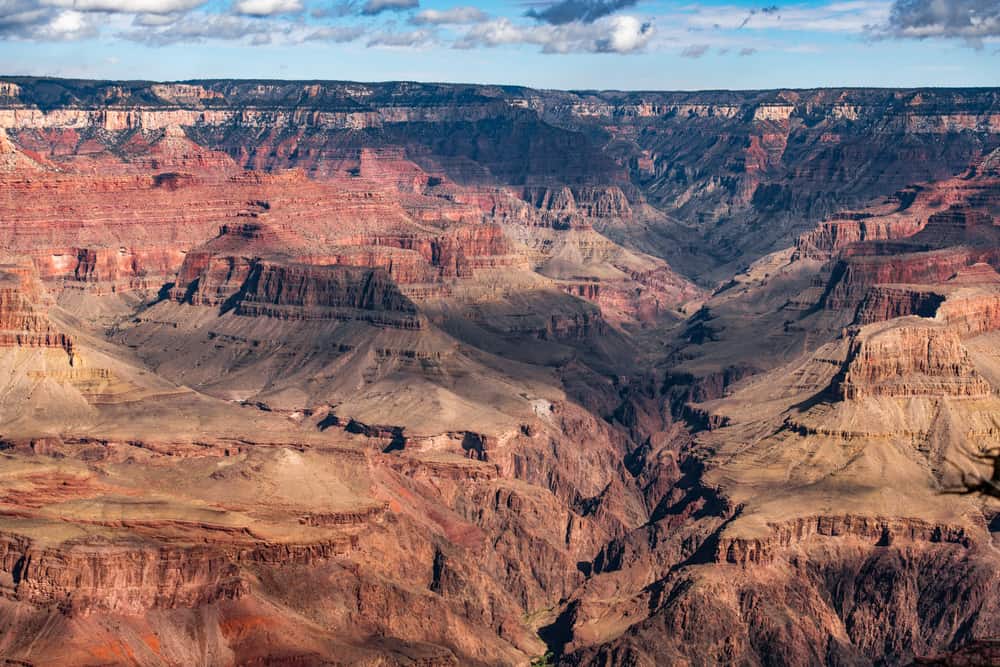Arizona’s Grand Canyon National Park garnered (GCNP) 4.5 million visitors last year bringing in an estimated $710 million in spending to the region, supporting 9,390 local jobs, according to a new study by the National Park Service and the U.S. Geological Survey.
The park’s achievements, however, were negated by its $940 million in deferred maintenance, excluding the $9 million for the Horace Albright Training Center. According to the NPS infrastructure website, the sum represents one portion of the park service’s $21.8 billion maintenance backlog at the end of the first quarter of the fiscal year 2022.
“A large portion of these backlog projects will be fixed in the coming years as GCNP starts a number of “generational projects,” said Robert Parrish, chief of planning, environment, and projects for GCNP.
“We’re going to spend hundreds of millions of dollars to fix a number of systems in the park — water, wastewater (and) electric — that were designed in the 1960s and built in the 1970s with a 25-year shelf life with the expectation that the park would have 2.5 million visitors,” GCNP Superintendent Ed Keable said at a community meeting. “We’re 25-30 years beyond the shelf life, and pre-pandemic, we were at 6.4 million visitors.”
GCNP outlined four main projects in the coming years on the South Rim. It includes replacing and relocating the APS power substation in the village for $17 million, increasing the capacity of the heli-base, and replacing the wastewater treatment plant for $40 million, according to a report.
These initiatives will also support the most significant project, which is upgrading the Transcanyon waterline for $88 million, including replacing pumps at Roaring Springs.
The Transcanyon project will change the water source for the South Rim into Bright Angel Creek, while the North Rim will continue to be supplied with drinking water from Roaring Springs. Once it is completed, water will be available all year for hikers in the canyon’s interior.
The improvements came at the cost of trail closures that resulted in rim-to-rim hikers coming to dead ends and not being allowed to cross construction zones. It also limited the availability of services and the temporary closing of Phantom Ranch.
Great American Outdoors Act
The funding for the GCNP projects comes from the Legacy Restoration Fund, which was established in the wake of the Great American Outdoors Act in 2020.
The fund provides $1.9 billion annually for five years to ensure the upkeep of infrastructure on public lands through the revenue from energy development of fossil fuels and renewable energy development on public lands.
While it’s lauded as a bipartisan accomplishment, Taylor McKinnon, a public land campaigner for the Center for Biological Diversity, said tying construction funds to fossil fuel development demonstrates the fundamental conflict between discussions on the need to improve the Grand Canyon’s water usage in the context of a shrinking Colorado River, while being partially funded by its primary source of funding that is fossil fuels.
“That’s a huge perverse incentive built into that legislation,” McKinnon said. “The industrialization from more oil and gas fracking will harm public lands, it will exacerbate the extinction crisis and in our region with aridification will hasten the demise of the Colorado River.”
Alicyn Gitlin, program manager for the Sierra Club, also recognized the public health risks of waterline breakages at Grand Canyon but would prefer the money to come from sources outside energy revenue from public lands.
“If these costs were divided among all taxpayers, they would be minimal and probably cost less than the long-term costs of healthcare and land cleanup that comes from oil, gas, and coal extraction,” Gitlin said.
Generational projects
“These are generational projects,” Parrish said. “This will never have to be done again the time (of) my kids and great-grandkids if we do this right. We are looking at what’s going wrong for us now as far as maintenance (and) how do we carry forward, so it’s not 25 or 30 years. We get 50-75 years of life out of this. My hope is that I’ll be long retired and gone before they even consider replacing the Transcanyon waterline again.”
According to Parrish, infrastructure upgrades are designed with a longer lifespan of more than 50 years. Several long-term trends built into the planning process — increased energy demands from more electric vehicles on the road and from the park’s infrastructure, more day users, and an increase in visitors throughout the year outside the summer season peaks.
“Looking at other projects we have coming with the Great American Outdoors Act and Legacy Restoration Fund … the power demand for the park over the next five to 10 years is going to increase,” Parrish said. “The 10-megawatt substation is already at capacity by adding even just a few of these systems with the Transcanyon waterline and others it’s overcapacity. So that’s why we’re replacing this substation.”
For example, the new water delivery from Bright Angel Creek design requires more electricity to pump from the bottom of the canyon instead of being able to use gravity to push water through the system at the higher elevation of Roaring Springs.
Additional power will be required for upgrades to the shuttle buses as well, according to a report.
Currently, the bus system runs on compressed natural gas, but Parrish said GCNP is working on a grant to convert ten buses to battery electric, along with a new bus maintenance facility,
“While it would not suffice for all of our routes within the park because a few are too far-reaching and the buses would run out of charge,” he said. “We’ve got the village circulator loop and a couple of loops …we feel are very good for battery-electric buses. That’ll end up drawing a couple of megawatts itself.”
Parrish said the Transcanyon waterline and the heli-base project are out of pre-solicitation now in FedBizOpps and is expected to be released later this week or next for actual solicitation with a contractor to be selected later this year.
“I’m getting a lot of pointed questions and people wanting specifics, but unfortunately, there’s one member of our team for a lot of these projects that we don’t have onboard yet, and that’s a contractor,” Parrish said. “Once we have the contractor selected … we’ll be able to figure out a lot more things like the schedule when we’re going to have closures (and) when work is going to commence.”
This article originally appeared on Williams News.


